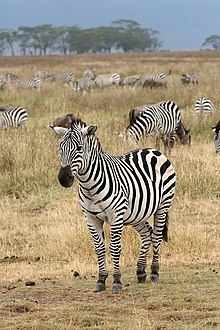

Hi Everybody!!
Thank You all for your wonderful wishes, prayers and thoughts for Thanksgiving. We had quite a day and sooooooooo much to eat. We had Thanksgiving Prayers at 6:00 and I shared a prayer sent by +ozone pope for our family. (Thank You, ozone). We had a zebra sleepover and in the morning, the sun came shining in the window to wake everybody up. Time for the highlight for the girls: The safari ride! (Yes. I know this is not typical and we are likely the only people in the States who had a Safari ride). More people should try it, as we really had fun! I can still hear my Kate screaming with delight: Go, Granny, Go-faster and faster! For the rest of their little lives they will remember the Thanksgiving Zebra Safari at Grandma Poppys in 2013! We embraced the purity of the spirit of thankfulness and joy! I tried to catch it and share with my friends around the world. Really, that is all it is about!
Link to photostudy:
https://plus.google.com/u/0/photos/117645114459863049265/albums/5951777857836463521




The Safari Ride:
http://en.wikipedia.org/wiki/Zebra
Zebra
From Wikipedia, the free encyclopedia
Zebras (/ˈzɛbrə/ zeb-rə or /ˈziːbrə/ zee-brə)[1] are several species of African equids (horse family) united by their distinctive black and white stripes. Their stripes come in different patterns, unique to each individual. They are generally social animals that live in smallharems to large herds. Unlike their closest relatives, horses and asses, zebras have never been truly domesticated.
There are three species of zebras: the plains zebra, the Grévy's zebra and the mountain zebra. The plains zebra and the mountain zebra belong to the subgenus Hippotigris, but Grévy's zebra is the sole species of subgenus Dolichohippus. The latter resembles anass, to which it is closely related, while the former two are more horse-like. All three belong to the genus Equus, along with other living equids.
The unique stripes of zebras make them one of the animals most familiar to people. They occur in a variety of habitats, such as grasslands, savannas, woodlands, thornyscrublands, mountains, and coastal hills. However, various anthropogenic factors have had a severe impact on zebra populations, in particular hunting for skins and habitat destruction. Grévy's zebra and the mountain zebra are endangered. While plains zebras are much more plentiful, one subspecies, the quagga, became extinct in the late 19th century – though there is currently a plan, called the Quagga Project, that aims to breed zebras that are phenotypically similar to the quagga in a process called breeding back.
| Zebras | |
|---|---|
 | |
| Plains zebra (Equus quagga) | |
| Scientific classification | |
| Kingdom: | Animalia |
| Phylum: | Chordata |
| Class: | Mammalia |
| Order: | Perissodactyla |
| Family: | Equidae |
| Genus: | Equus |
| Subgenus: | Hippotigris and Dolichohippus |
Physical attributes
Size and weight
The common plains zebra is about 50–52 inches (12.2–13 hands, 1.3 m) at the shoulder with a body ranging from 6–8.5 feet (2–2.6 m) long with an 18-inch (0.5 m) tail. It can weigh up to 770 pounds (350 kg), males being slightly bigger than females. Grévy's Zebra is considerably larger, while the mountain zebra is somewhat smaller.[7]
Stripes
It was previously believed that zebras were white animals with black stripes, since some zebras have white underbellies. Embryological evidence, however, shows that the animal's background color is black and the white stripes and bellies are additions.[3] It is likely that the stripes are caused by a combination of factors.[8]
The stripes are typically vertical on the head, neck, forequarters, and main body, with horizontal stripes at the rear and on the legs of the animal. The "zebra crossing" is named after the zebra's black and white stripes.
A wide variety of hypotheses have been proposed to account for the evolution of the striking stripes of zebras. The more traditional of these (1 and 2, below) relate to camouflage.
1. The vertical striping may help the zebra hide in grass by disrupting its outline. In addition, even at moderate distances, the striking striping merges to an apparent grey.
2. The stripes may help to confuse predators by motion dazzle—a group of zebras standing or moving close together may appear as one large mass of flickering stripes, making it more difficult for the lion to pick out a target.[9]
3. The stripes may serve as visual cues and identification.[3] Although the striping pattern is unique to each individual, it is not known whether zebras can recognize one another by their stripes.
4. Experiments by different researchers indicate that the stripes are effective in attracting fewer flies, including blood-sucking tsetse flies and tabanid horseflies.[8][10] A 2012 experiment in Hungary showed that zebra-striped models were nearly minimally attractive to tabanid horseflies. These flies are attracted to linearly polarized light, and the study showed that black and white stripes disrupt the attractive pattern. Further, attractiveness increases with stripe width, so the relatively narrow stripes of the three living species of zebras should be unattractive to horseflies.[11][12]
(the real thing (from Google Search);
African Safari - Namibia, Etosha National Park : Zebras - YouTube
www.youtube.com/watch?v=2qNuR4JNLy0
Jul 6, 2011 - Uploaded by john kweeWatering Hole in Etosha National Park, June 2011.

BLACK FRIDAY WAS BLUE SKIES AND SUNNY BUZZARDS!!!!!!


link to album photostudy:
https://plus.google.com/u/0/photos/117645114459863049265/albums/5951846045073306449

...this is brendasue signing off from Rainbow Creek. See You next time! Happy Holidays!

O+O


No comments:
Post a Comment
Hi Everybody! Please say hello and follow so I know you are here! Due to the inconsideration of people trying to put commercials on my blog comment area, I have restricted use of anonymous posts. Sorry that some hurt all.
My public email is katescabin@gmail.com No spammers or trolls